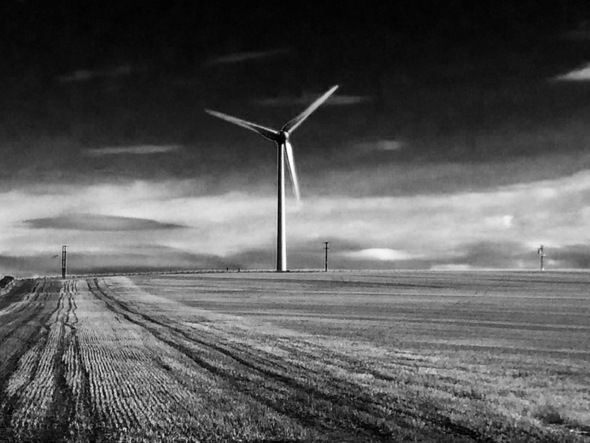Wind turbines can pick up the slack on coldest days
During winter in Great Britain, warmer periods are often windier, while colder periods are often calmer, due to the prevailing weather patterns. Colder periods are also when electricity demand increases.
This means that wind turbines are widely considered to be producing the least energy when demand is highest. However, the new study, published today in the journal Environmental Research Letters, shows that on the very coldest days, turbines often produce more power than the average winter day.
The team, which involved scientists from the Met Office Hadley Centre, Imperial College London and the University of Reading, found that during high demand (cold) days, capacity from turbines decreased by an average of a third. However, during the highest five percent of energy demand days, half had above-average wind power, due to more of these days having strong easterly winds.
The research suggests that a spread of turbines around Great Britain would make the most of the varied wind patterns associated with the coldest days – maximising power supply during high demand conditions. Results also suggest that during high demand periods offshore wind power provides a more secure supply compared to onshore, as offshore wind is sustained at higher levels.
Hazel Thornton, of the Met Office Hadley Centre, is one of the paper’s authors. She said: “The very coldest days are associated with a mix of different weather patterns, some of which produce high winds in parts of Great Britain. “For example, very high pressure over Scandinavia and lower pressure over Southern Europe blows cold continental air from the east over Great Britain, giving high demand, but also high wind power. In contrast, winds blowing from the north, such as happened during December 2010, typically give very high demand but lower wind power supply.”
Professor Sir Brian Hoskins, of the University of Reading and Chair of Imperial College London’s Grantham Institute – Climate Change and the Environment, is one of the paper’s other authors. He said: “A wind power system that is distributed around Great Britain is less influenced by low generation on cold, still winter days: low wind in one region tends to be compensated by wind elsewhere. The average drop in generation is only about a third, and is generally smaller than this on the really cold days.”
- Source:
- Imperial College London
- Author:
- Hayley Dunning
- Link:
- www3.imperial.ac.uk/...
- Keywords:
- Imperial College, wind turbine, cold






















